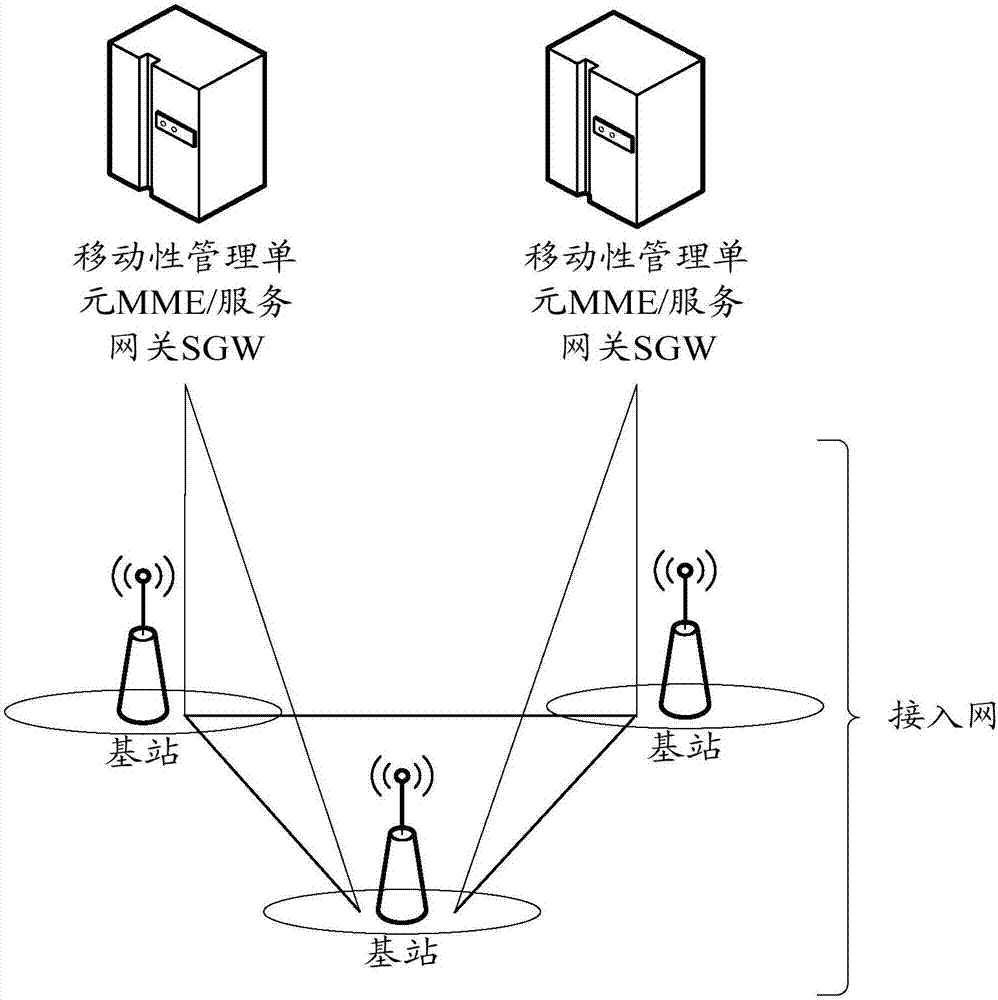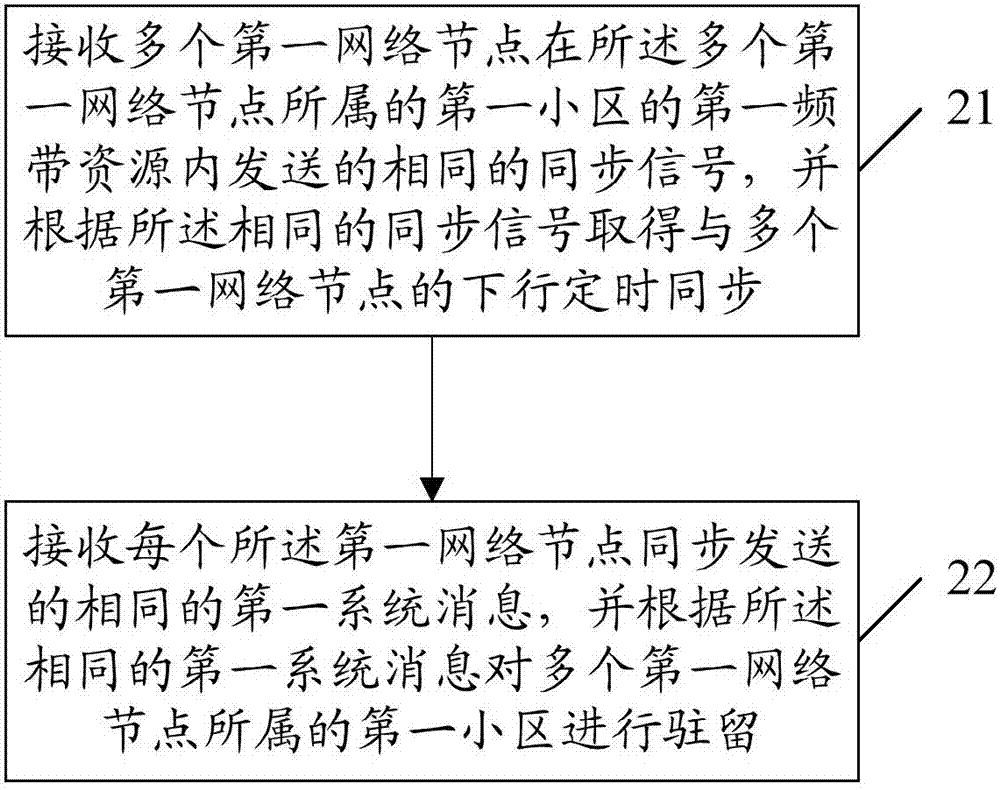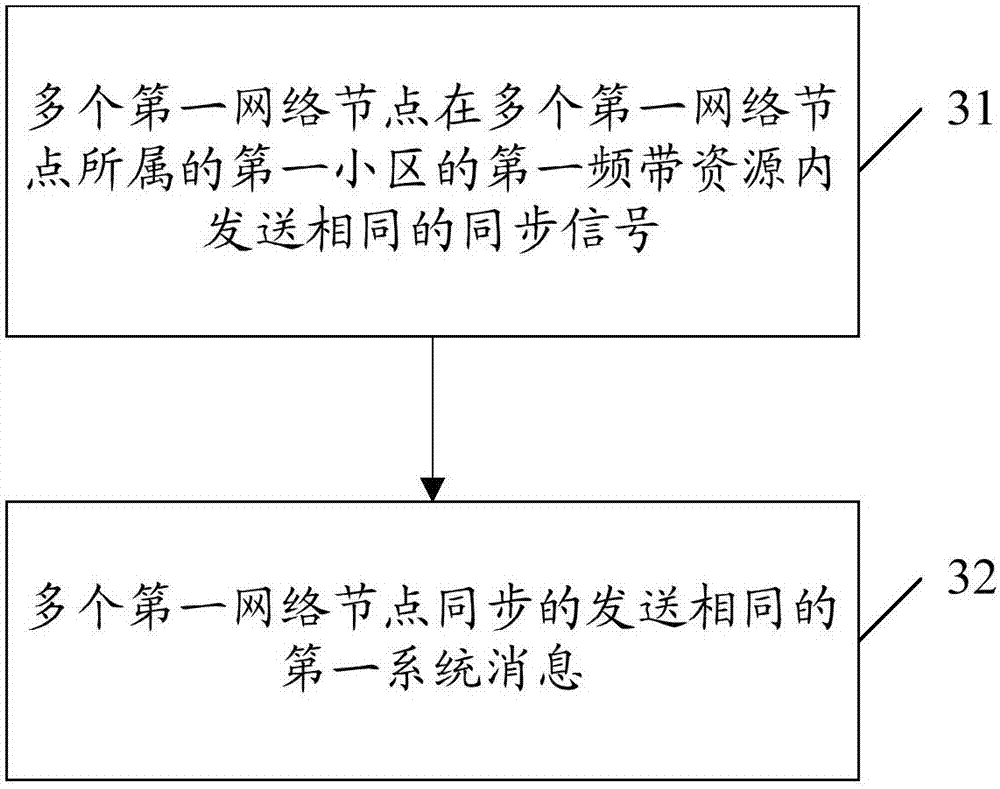Cell operation method and device
An operation method and cell technology, applied in the field of communication, can solve the problems such as the limited maximum bandwidth of a single cell, the inability of terminals to switch smoothly between multiple dense network nodes, and the inability to support multiple nodes.
- Summary
- Abstract
- Description
- Claims
- Application Information
AI Technical Summary
Problems solved by technology
Method used
Image
Examples
no. 1 example
[0186] The core idea of the first embodiment of the present invention is as follows: for an idle terminal, it resides in a unified resident layer, wherein the resident layer is a system message and a synchronization signal and other common messages sent by multiple network nodes synchronously And is perceived by the terminal. The terminal can initiate the access process at the resident layer or the designated time-frequency domain location. After entering the connected state, the terminal can be configured with dedicated transmission resources. These dedicated transmission resources are provided by different network nodes on the same or different frequency bands. which provided.
[0187] The so-called resident layer refers to the sum of resources that the terminal can perceive when it is resident in an idle state. The resource sets that the terminal can see in the resident state and the connected state are different. The resources that need to be monitored in the resident s...
no. 2 example
[0225] The core idea of the second embodiment of the present invention is consistent with that of the above-mentioned first embodiment, so no repeated description is given here. Such as image 3 As shown, the second embodiment of the present invention provides a cell operation method applied to the network side, including:
[0226] Step 31, multiple first network nodes send the same synchronization signal in the first frequency band resource of the first cell to which the multiple first network nodes belong, so that the terminal can communicate with the multiple first network nodes according to the same synchronization signal Obtain downlink timing synchronization;
[0227] Step 32, multiple first network nodes synchronously send the same first system message, so that the terminal can camp on the first cell to which the multiple first network nodes belong according to the first system message. Specifically, the same first system message includes: full frequency band resour...
no. 3 example
[0261] The core idea of the third embodiment of the present invention is as follows: For an idle terminal, if it receives different synchronization signals sent by different network nodes, but the received system messages sent by different network nodes are the same, the terminal can The same system message sent by the network node determines which network nodes belong to the same cell, and then camps on the cell according to the cell selection principle. The subsequent access and transmission process is the same as the first embodiment, and the description will not be repeated again.
[0262] Such as Figure 4 As mentioned above, the third embodiment of the present invention provides a cell operation method applied to the terminal side, including:
[0263] Step 41: Receive different synchronization signals sent by a plurality of second network nodes in the third frequency band resources of the second cell to which the plurality of second network nodes belong, and respective...
PUM
 Login to View More
Login to View More Abstract
Description
Claims
Application Information
 Login to View More
Login to View More - R&D
- Intellectual Property
- Life Sciences
- Materials
- Tech Scout
- Unparalleled Data Quality
- Higher Quality Content
- 60% Fewer Hallucinations
Browse by: Latest US Patents, China's latest patents, Technical Efficacy Thesaurus, Application Domain, Technology Topic, Popular Technical Reports.
© 2025 PatSnap. All rights reserved.Legal|Privacy policy|Modern Slavery Act Transparency Statement|Sitemap|About US| Contact US: help@patsnap.com



